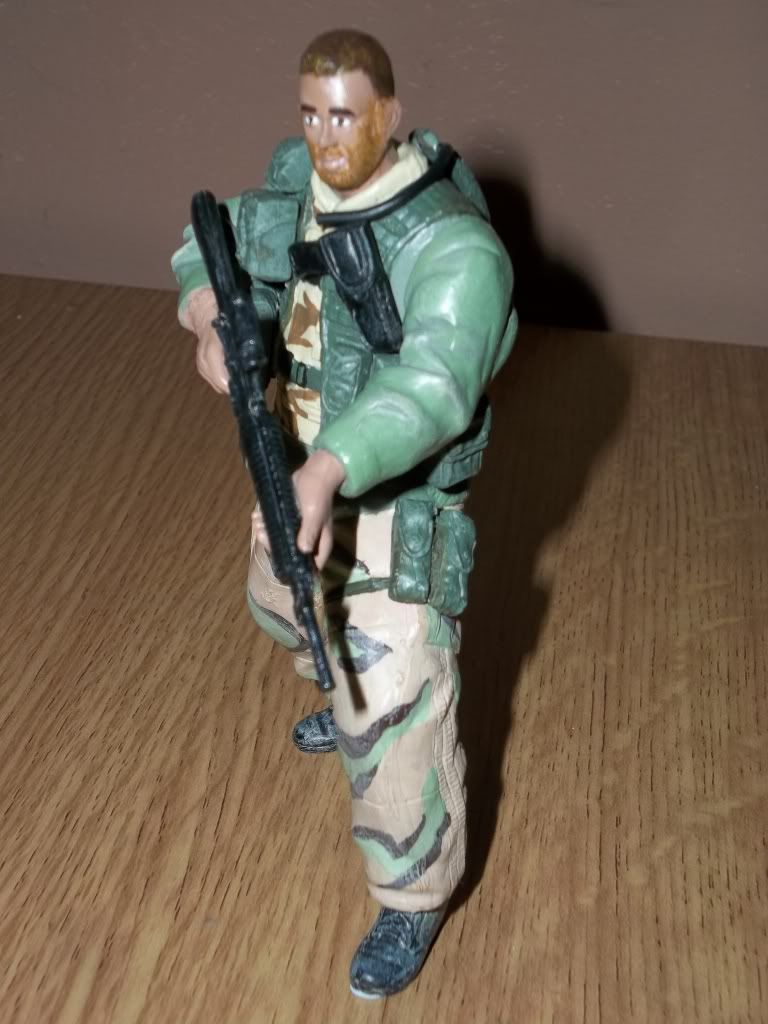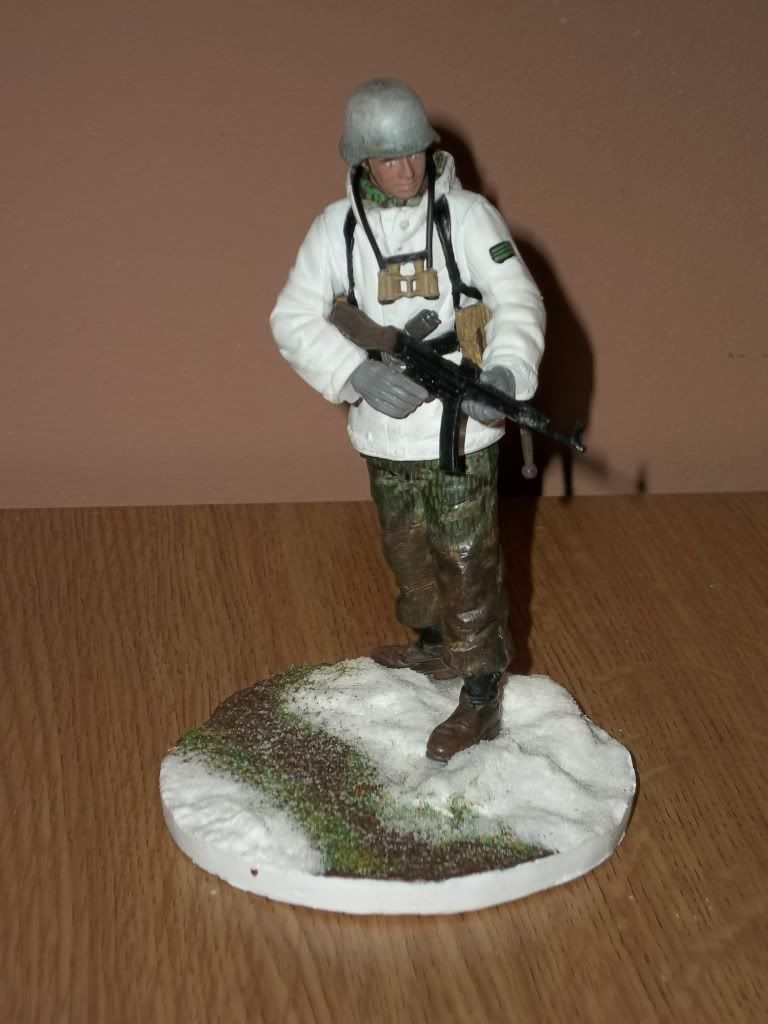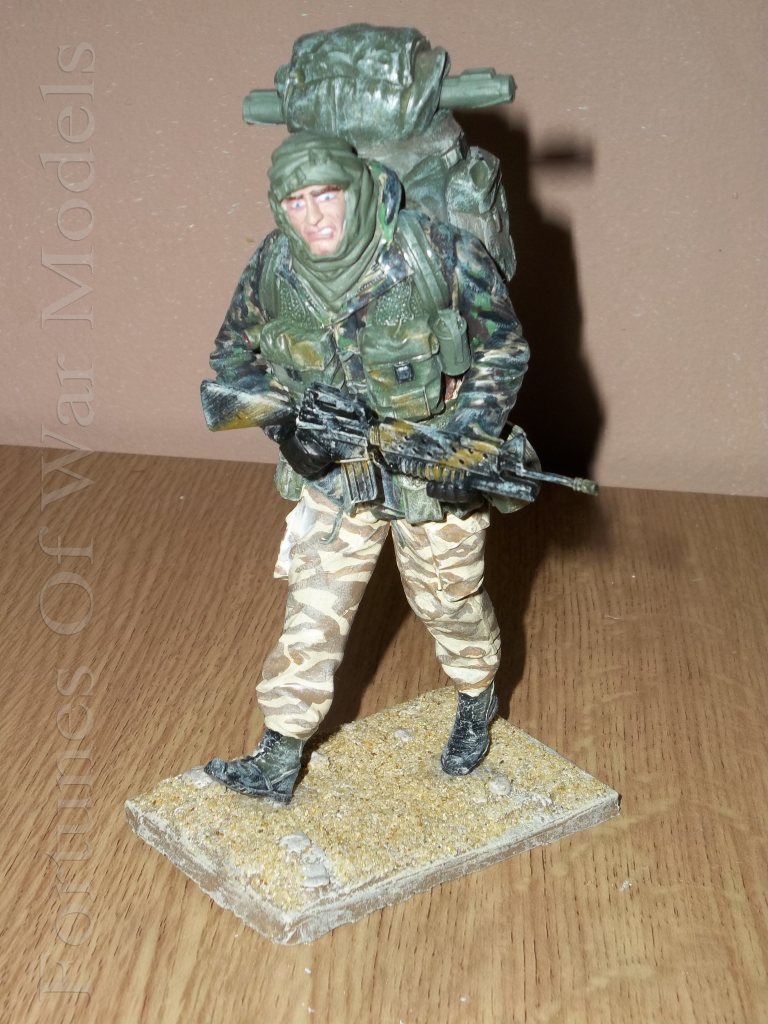FortunesOfWarModels
Active Member
Hi all,
I've recently started painting 120mm figures, having never really done anything in this scale before, im struggling with the skin tones, and low and highlights on the skin.
I've included 3 photos, the first, is a tamiya figure, converted to a SAS trooper attached to TF88, combined special forces in Afhgan, present day, the second is a volksgrenadier, from the Ardennes offensive, WWII and the third is a gulf war era SAS trooper.
The first and second were painted flat, one colour (cidadel tallarn flesh) and the third, the gulf war sas trooper, was painted with tallarn flesh with a mixed slightly darker pink for the lips, cheeks etc.
What steps can i take whilst painting, to make the skin tones more realistic, rather than flat and monotone as they currently are?
The photo's are not very good, as the flash covers a lot of the detail and makes them look very 1-dimensional, or maybe thats just my painting, but im sure you see what i mean from the 1st photo.



I've recently started painting 120mm figures, having never really done anything in this scale before, im struggling with the skin tones, and low and highlights on the skin.
I've included 3 photos, the first, is a tamiya figure, converted to a SAS trooper attached to TF88, combined special forces in Afhgan, present day, the second is a volksgrenadier, from the Ardennes offensive, WWII and the third is a gulf war era SAS trooper.
The first and second were painted flat, one colour (cidadel tallarn flesh) and the third, the gulf war sas trooper, was painted with tallarn flesh with a mixed slightly darker pink for the lips, cheeks etc.
What steps can i take whilst painting, to make the skin tones more realistic, rather than flat and monotone as they currently are?
The photo's are not very good, as the flash covers a lot of the detail and makes them look very 1-dimensional, or maybe thats just my painting, but im sure you see what i mean from the 1st photo.



